Stage Tuning and ECU Remapping Explained
Stage Tuning and ECU Remapping Explained. One of the more confusing bits of terminology you might hear when you first take an interest in car tuning is the idea of “Stage Tuning” While the basic idea of tuning stages is simple. The way in which the term and different stages get used is often confusing and unclear. So let’s take a look at what exactly is “Stage Tuning”
What is stage tuning?
A stage represents a set of upgraded parts fitted to a car. As you might expect, a stage is how far you’ve gone with your tuning upgrades. In Short, stage one tuning is conducted on a car without mechanical modifications, or perhaps very light upgrades such as a cat back exhaust or air filter. So a near stock set up, but now with ECU remapping = Stage 1 tuning.
Stage 2 represents a more tuned and upgraded car than stage 1. So a car with mechanical as well as software upgrades. Where things can get a bit confusing is that what each “stage” means can vary from car to car, and even from tuner to tuner.
What one tuner considers to be stage 3 on a turbocharged car might be quite different from stage 3 on a normally aspirated car. There is no golden rule of what exactly make up a Stage 2 or 3 set up. It will differ from car to car. There are some general rules of thumb though.
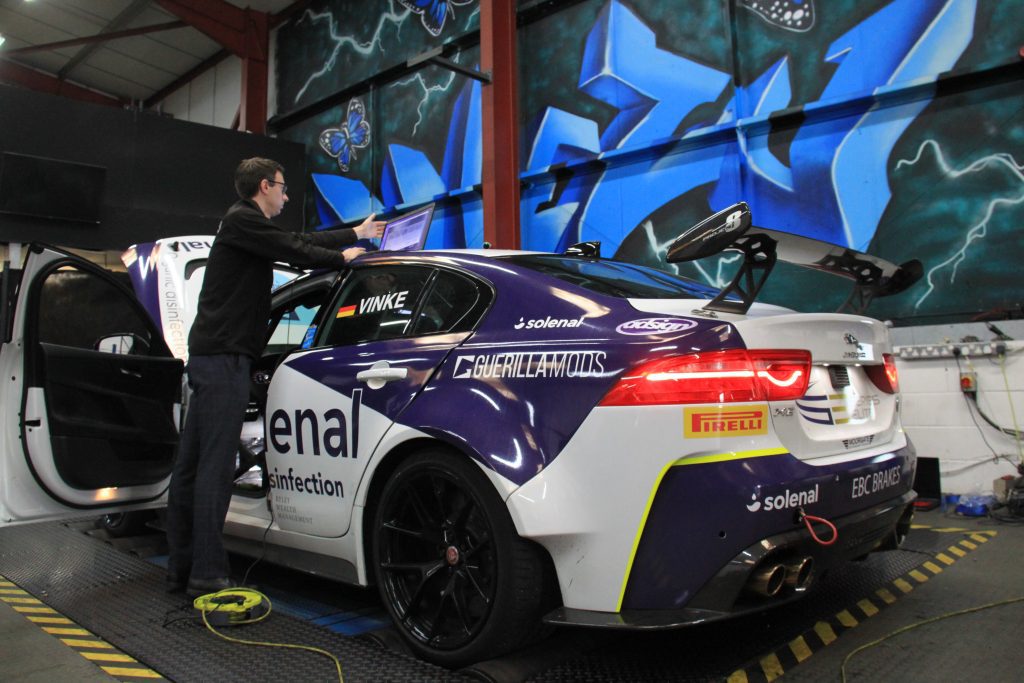
Stage 1 Tuning
Stage 1 tends to be a series of modifications that can be fitted on their own to a standard car. This would include remaps that don’t require any additional hardware, air intake and exhaust upgrades that leave the original catalytic converters in place.
Adding these light upgrade may see the remap software giving you bigger benefits than it would on its own.
Engine ECU Remapping
A remap is often the first step in upgrading performance and getting more horsepower and torque. Essentially, the ECU (Engine Control Unit) is upgraded with “enhanced” software. Engine management includes fueling, sparking, timing, and turbo-boost. The engine can be tuned to unleash more power by adjusting these settings. Engine limiters, such as speed or rev limiters can also be moved.
ECU Remaps come in a few different forms. Once upon a time, the norm was soldering a new chip onto the ECU, hence the term “chipping” or “Chip-tuning” . Now on most cars, this can be done simply through the Vehicles diagnostic port, a tuning tool, such as the Alientech Kess3 or Autotuner, and a laptop.
VIEZU offer this exact service, and have over 1000 installation sites around the world
For some cars, ECU remapping is not possible, and where this is the case, VIEZU will always try to offer an alternative tuning method, such as a piggy back tuning box. You can see more on these here; V Box Explained
Depending on the engine, you can see significant power increases from ECU remapping as a stand alone product. It is especially effective on turbo and supercharged cars.
Air Filters
Replacement “performance air filters” or panel filters may add some additional airflow. In general though, these type of filters are still covered under the bracket of “Stage One Tuning”
The performance gains are not significant on their own from a panel filter. However, when combined with a remap, where the turbo, or supercharger is working a little harder. A performance air filter can help the combination can help the tuning perform better.
Exhausts
Still covered by Stage one tuning. A cat-back exhaust is normally where you start to see power increases, even with stock or standard software. By opening up gas flow of the exhaust system you can increase the amount of air that the turbo can pump through the engine. Derestricting the exhaust at the same time as upping the boost should see the benefits of both working together to give you even more power.
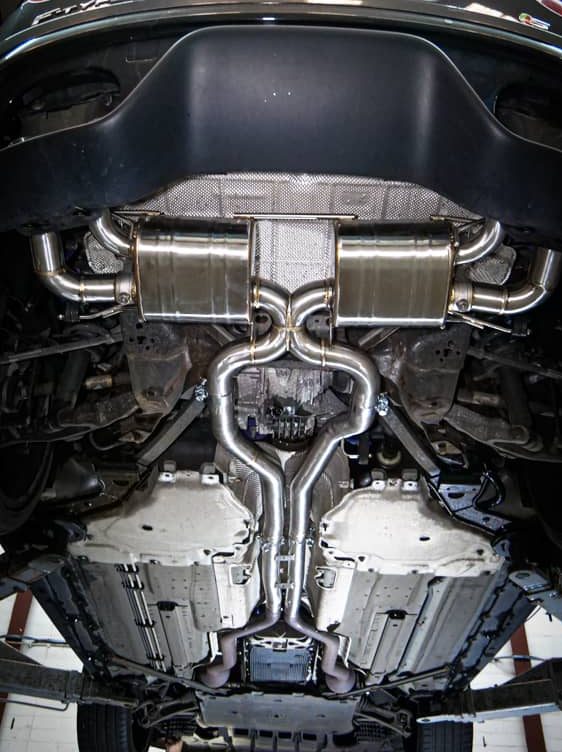
Stage 2 Tuning
Stage 2 can be a little different between cars, depending on what their weak spots from the factory are. However, common theme tends to be removing limiting parts of the engine and exhaust system in combination with ECU software that takes advantage of this of te mechanical modifications.
Engine Remapping
As with stage 1, the remap will increase power. It also takes care of the different performance from a sports catalyst or de-cat pipe. Fitting a de-cat pipe will also of course trigger a “check engine ” DTC. Tuning and remapping at stage 2, can deactivate the warming lamp as well as adding more performance.
For offroad & motorsport use only.
Therefore a stage 2 remap will be different from stage 1. Accounting for the additional modifications. The remapping would usually be done at the same time as the mechanical upgrades.
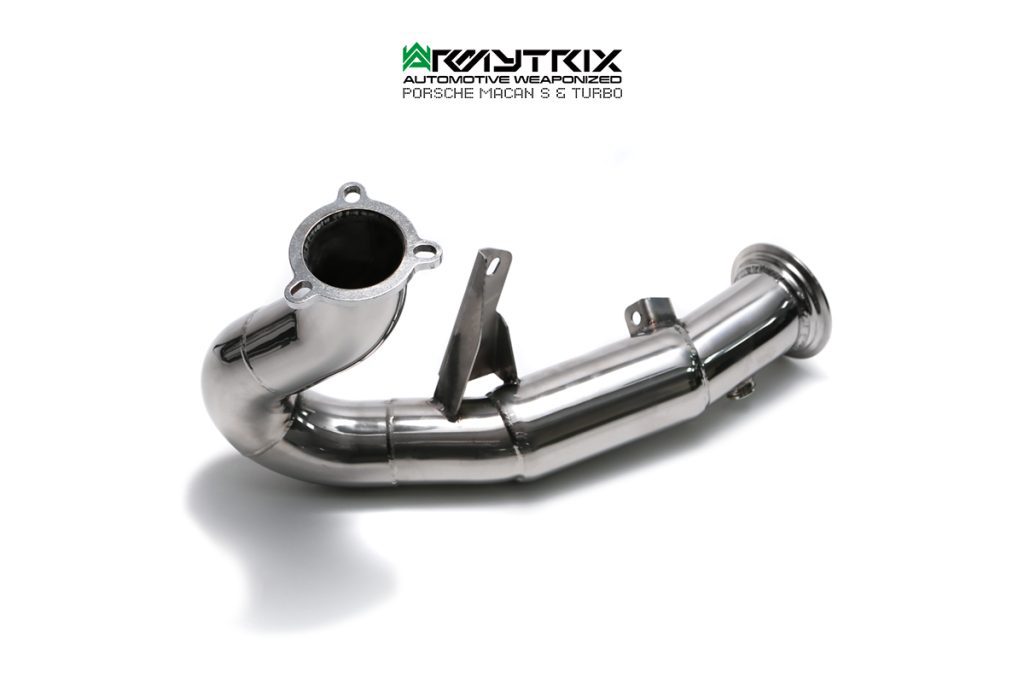
Exhaust downpipe
On most petrol turbo cars, a full performance exhaust system will start with the downpipe. This is the section of exhaust directly behind the turbo. Turbos are at their most efficient with as little restriction behind them as possible. This means any improved gas flow through this section of exhaust can unlock smore power and BHP.
In order to do this, you’re going to be replacing the original factory catalytic converter or converters, either with a de-cat pipe, or a better flowing sports catalyst. A de-cat pipe replaces the original catalytic converter with a straight through pipe. A sports-cat replaces the original catalytic converter, but with higher quality, more efficient one. You can see more on performance catalytic convertors here. Performance catalytic convertors explained.
Stage 2 is normally software that specifically takes advantage of the increased gas flow offered by the increased catalyst, as the standard software only really takes into account the original catalytic converter.
Air intake / air induction kit
As with stage 1 tuning, an uprated air intake should be on the list with your Stage two tuning considerations. With your tuning, turbo and exhaust system working well together, you don’t want to restrict the amount of air you can pull into the combustion process.
A good cold air induction system will deliver much air than a standard filter and airbox. You also want to make sure that the air going into the engine is as cold as it can be. A large open air filter under the bonnet sucking in warm engine compartment air can lose you lots of power. So invest in a well-designed and heat shielded cold air induction system.
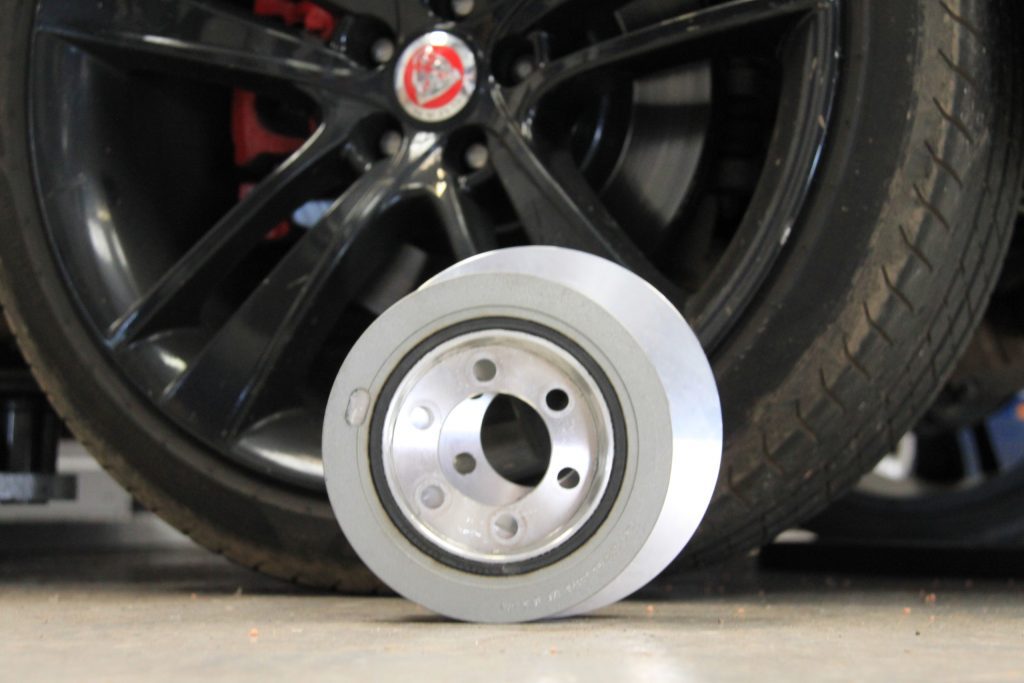
Supper Charger Pulley
If your car is supercharged, another common stage two upgrade would be a smaller supercharger pulley. This will spin the supercharger faster. And create more boost pressure – hence delivering more power.
Intercooler
Adding an upgraded intercooler to a turbocharged car would certainly be considered part of a Stage 2 upgrade package, or adding a supercharger “charge-cooler” to a supercharged engine. Intercoolers cool turbocharged air before it enters the engine. They are air-to-air radiators. Heat from the turbo makes the air less dense, so it’s important to cool the air after its passed through the turbo.
There are two main benefits on offer here. In the first place, colder air contains more oxygen, which is needed for your engine to burn petrol. The engine can make more power with more oxygen, especially if it is remapped.
Furthermore, your engine constantly makes varying amounts of power based on different sensor readings, including temperature. When temperatures rise, your engine will struggle to make as much power as it used to. You can help reduce this by improving the air cooling going into the engine.
That real sums up the options and main components that you would commonly see in a Stage two tuning package.
Stage 3 and and above
So, you want to play with the big boys now? At stage 3 tuning, you are really starting to push the engine and components on the car for max BHP. There is a lot to consider here. When you push this hard, its inevitable something sooner or later is going to fail. So much of stage three tuning is really about replacing parts that were coping fine with stage 2 power levels but may not cope with stage three power levels. Or components that will restrict your performance gains.
So with different cars there will be a lot of different option. And so stage 3 tuning is very bespoke and can seem a little confusing.
Below, you will see some of the components and parts usually associated with Stage 3 tuning.
Stage 3 ECU Remapping
As this point you really must put yourself and your car in the hands of an experienced custom software developer with a rolling road. Your stage 3 modifications and upgrades must be tested, measured and “dialled in together” to ensure they, and your engine are working together. Testing for air fuel, detonation and exhaust gas temperatures are all going to be critical. Not only so you get the best power from your set up. But also that nothing is going to melt or blow apart. Stage 3 tuning needs experience and patience.
Fuel injectors
A vehicle’s fuel consumption increases as its power level increases. Fuel-injectors will need to be upgraded at some point as the engine’s power increases. In most cases, these come from engines within the same family that have more power. It is possible, for instance, to use Audi RS4 injectors in higher stage Golf tuning package.
Fuel pump
It is crucial to keep your engine fed with enough fuel. A good amount of fuel keeps the engine’s cylinders from overheating. When you don’t provide enough fuel, your engine will run lean; it has nothing to do with fuel economy. It’s about stopping your engine from melting! It depends on how powerful the fuel pump is that came with your car when you need to consider this.
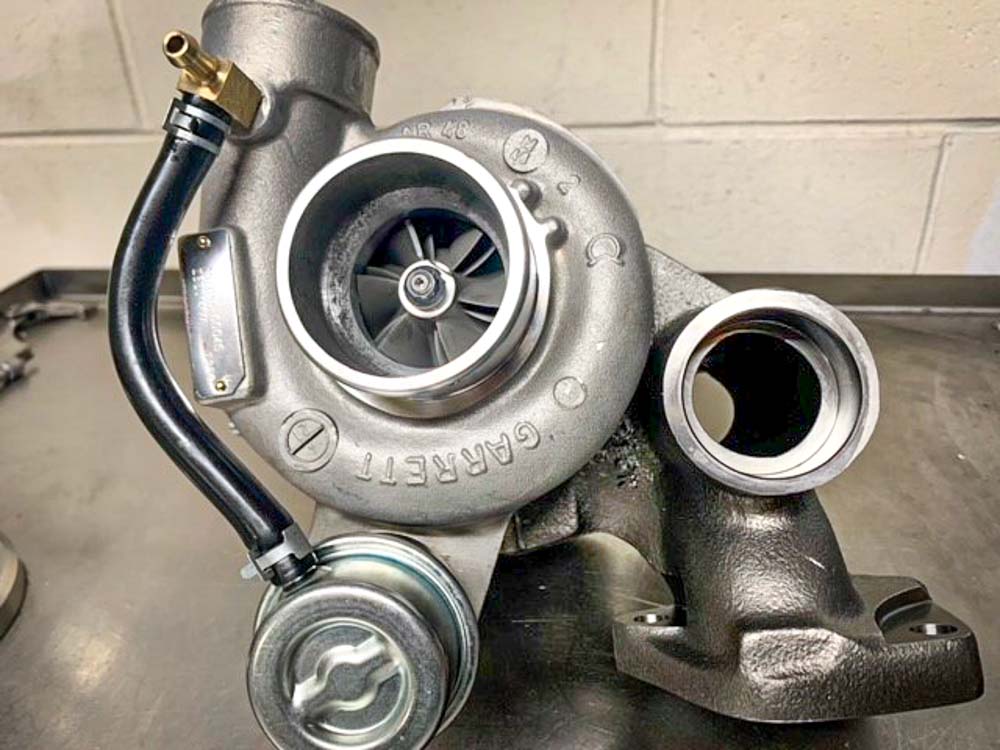
Turbocharger
A turbocharged engine’s turbocharger is one of the biggest limiting factors in its power output. It is only possible to spin a turbo so fast before either the turbo itself is damaged or the air being forced into the engine gets too hot. It’s time to upgrade your turbo. As with fuel injectors, often upgrades require swapping out a bigger turbo from a similar engine. Golf R turbos can be swapped onto Golf GTIs, for example..
Hybrid machined turbo ( this is where beiger turbo internals are fitted to a stock housing) or variable vane turbos are another consideration.
Supper Charger Pulleys
If your car is supercharged, the smaller charger pulley is often changed as part of stage 2 tuning. However, if you want to process to Stage 3 tuning. It is common to replace the larger supercharge drive pulley fitted to the engine crank shaft. This will increase your supercharger boost pressure further
Engine internals
The moving parts in your engine are made of metal and are finely balanced. The stress these are subjected to increases as the power is increased. As soon as you start exceeding those limits, you’ll have to start replacing these with stronger versions since they were designed to stand-up to a certain amount of stress. There is a lot of variation between engines when it comes to where these limits lie. In some cases, engines are built for power levels that are far greater than what the car is running. The pursuit of big power figures requires some upgrades to be carried out.
Forged pistons, con-rods and cranks shafts are common internal engines components upgrade to when seeking max power.
Things to note :
1 + 1 do not always make 2 in the world of car tuning. Most performance upgrades and parts will give you an ideal of the BHP and torque the parts should deliver. However, when you fit a number of these parts together, it is simply not a case of adding all these figures together. Then adding your original factory BHP to get the now expected modified power. Sorry guys, it just does not work like that.
The only way to really know, is to have your car dyno tested before and after the modifications are fitted and the ECU remapping carried out.
You may also want to consider, if you your car is a daily driver, especially if you cover a lot of miles. Do you really want to push your car above stage 3 tuning? Its great for ¼ mile racing, but not always so good for the school run or Monday morning traffic.
Where to find advice.
If you are considering a tuning project, be it stage 1, 2 or 3. The VIEZU team of software and mechanical engineers are on hand to help. You can mail the service team here : info@viezu.com
Frequently Asked Questions
Is an ECU Remap the Same as a Tune?
An ECU remap is a type of tune that modifies the software in your vehicle’s Engine Control Unit (ECU) to enhance performance. There are other types of tuning such as gearbox tuning and suspension upgrades.
Is a Stage 1 ECU Remap Safe?
A Stage 1 ECU remap is safe when performed by reputable tuners who work within manufacturer tolerances. However, some less reputable tuners offer inflated performance figures to attract customers, which can drastically shorten engine life – sometimes to just a few miles. At VIEZU, we always tune within manufacturer tolerances to maintain your vehicle’s lifespan whilst delivering reliable performance gains through quality tools and thorough testing.
Does a Stage 1 Remap Make a Difference?
Yes, a Stage 1 remap will make a noticeable difference to your vehicle’s performance through increased power, better throttle response and often improved fuel efficiency. Turbocharged and supercharged vehicles typically see the biggest gains. However, some performance cars are already tuned close to their material limits from the factory, so whilst power gains may be modest, remapping can still deliver smoother, more consistent power delivery for an enhanced driving experience.
What is a Stage 1 ECU Remap?
A Stage 1 ECU remap is a tuning process that optimises your vehicle’s engine settings, adjusting parameters such as fuel delivery, boost pressure and ignition timing. This level of remap is compatible with most standard vehicles so no additional modifications are required. VIEZU offers custom remapping services tailored to your vehicle and driving style.





